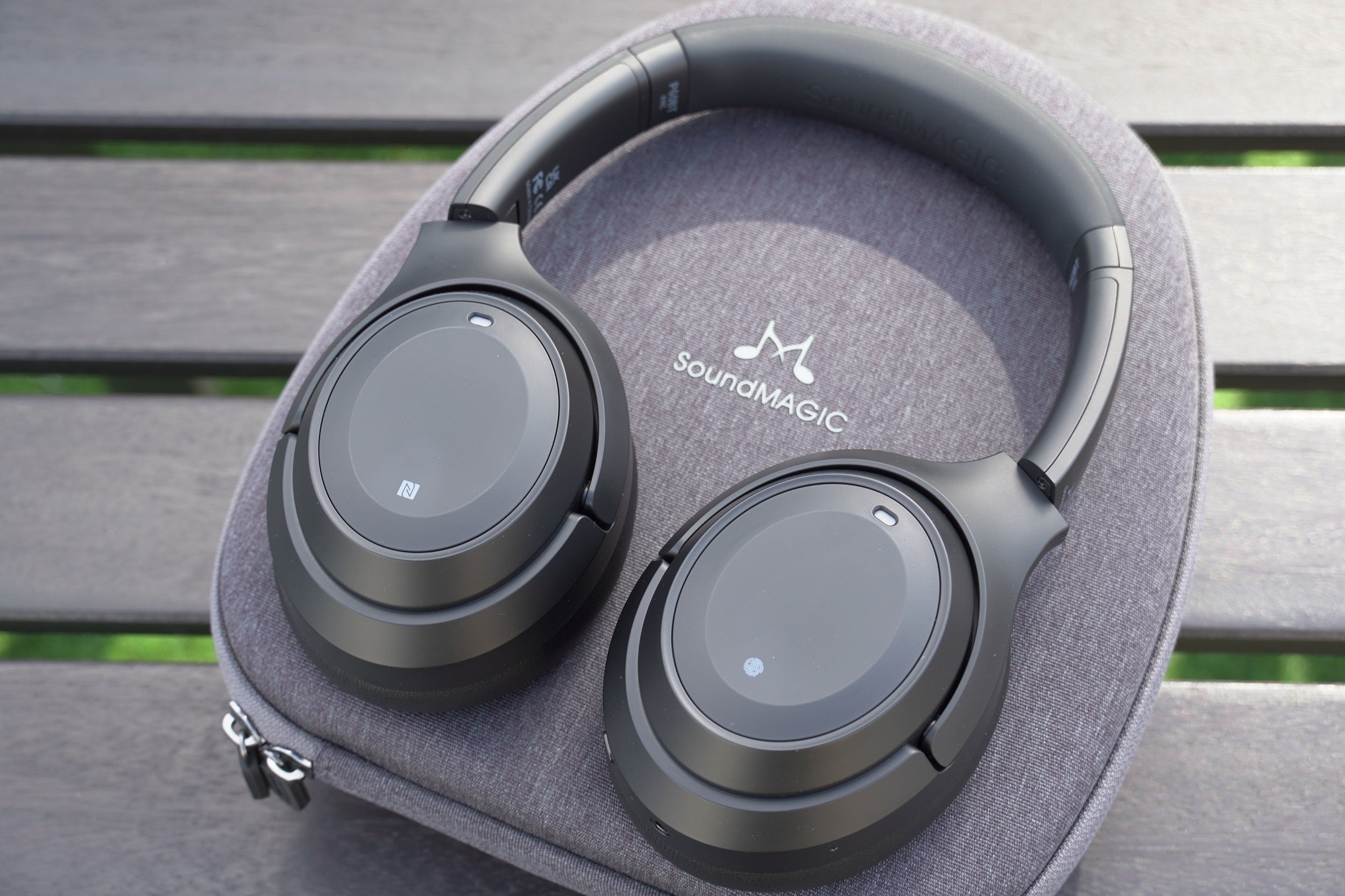Bowers and Wilkins Px8 Review
New colourways but still the same excellent wireless performance
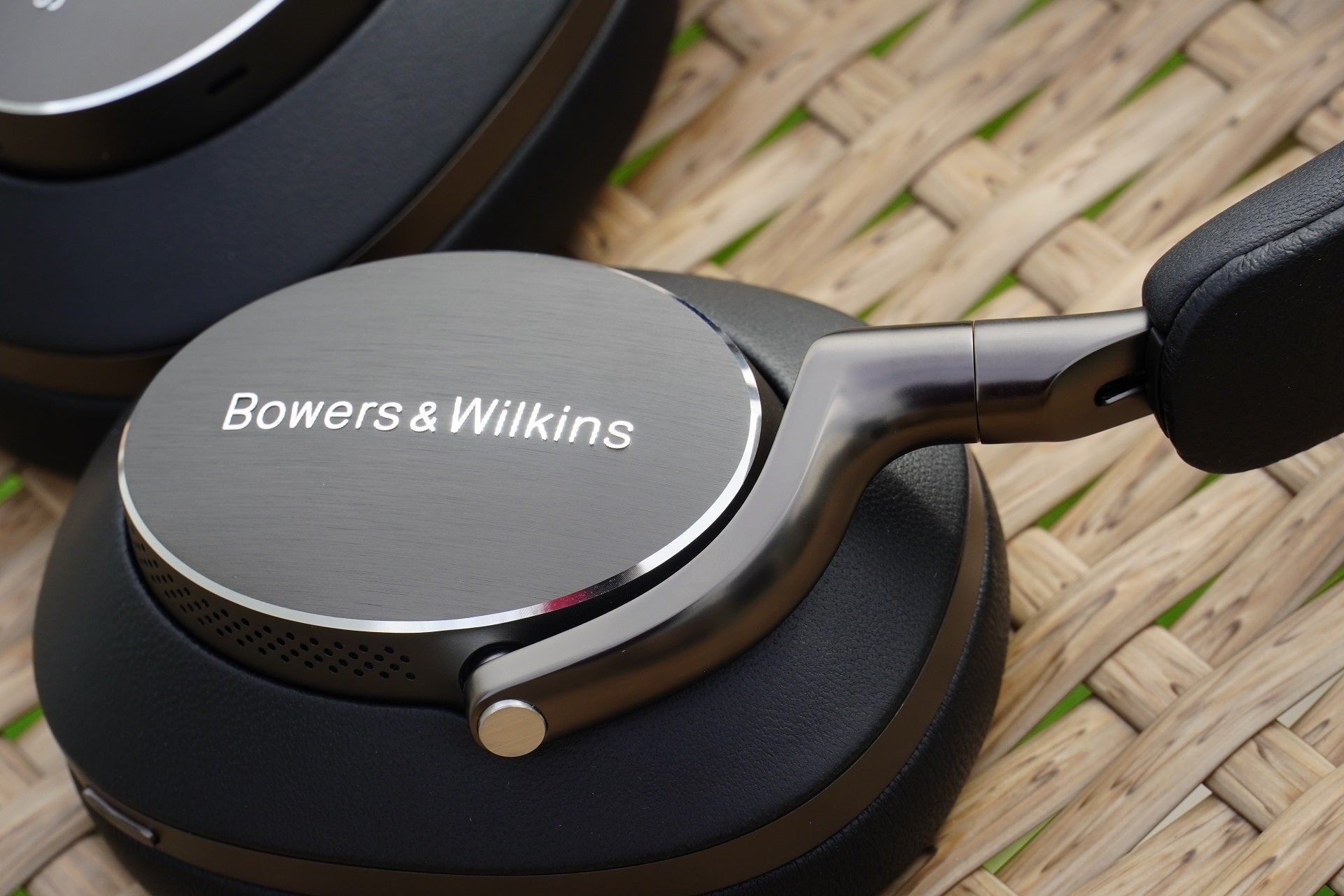
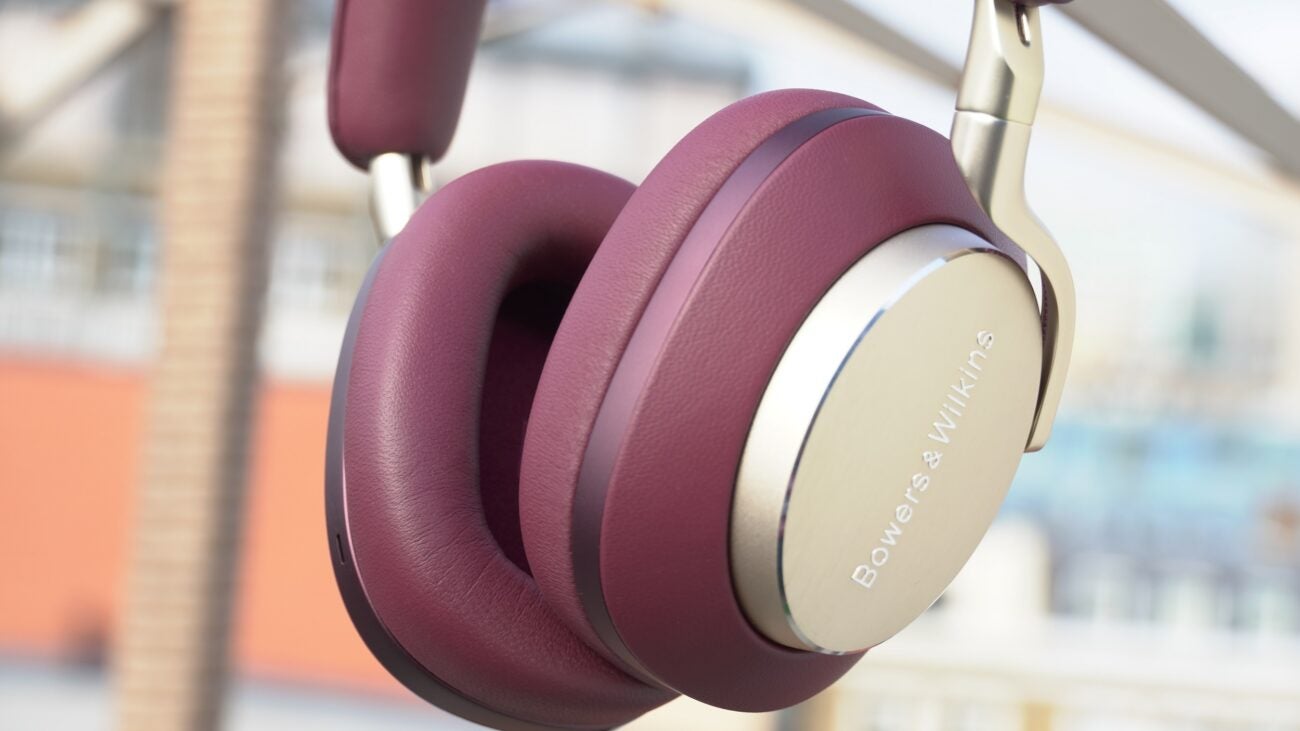
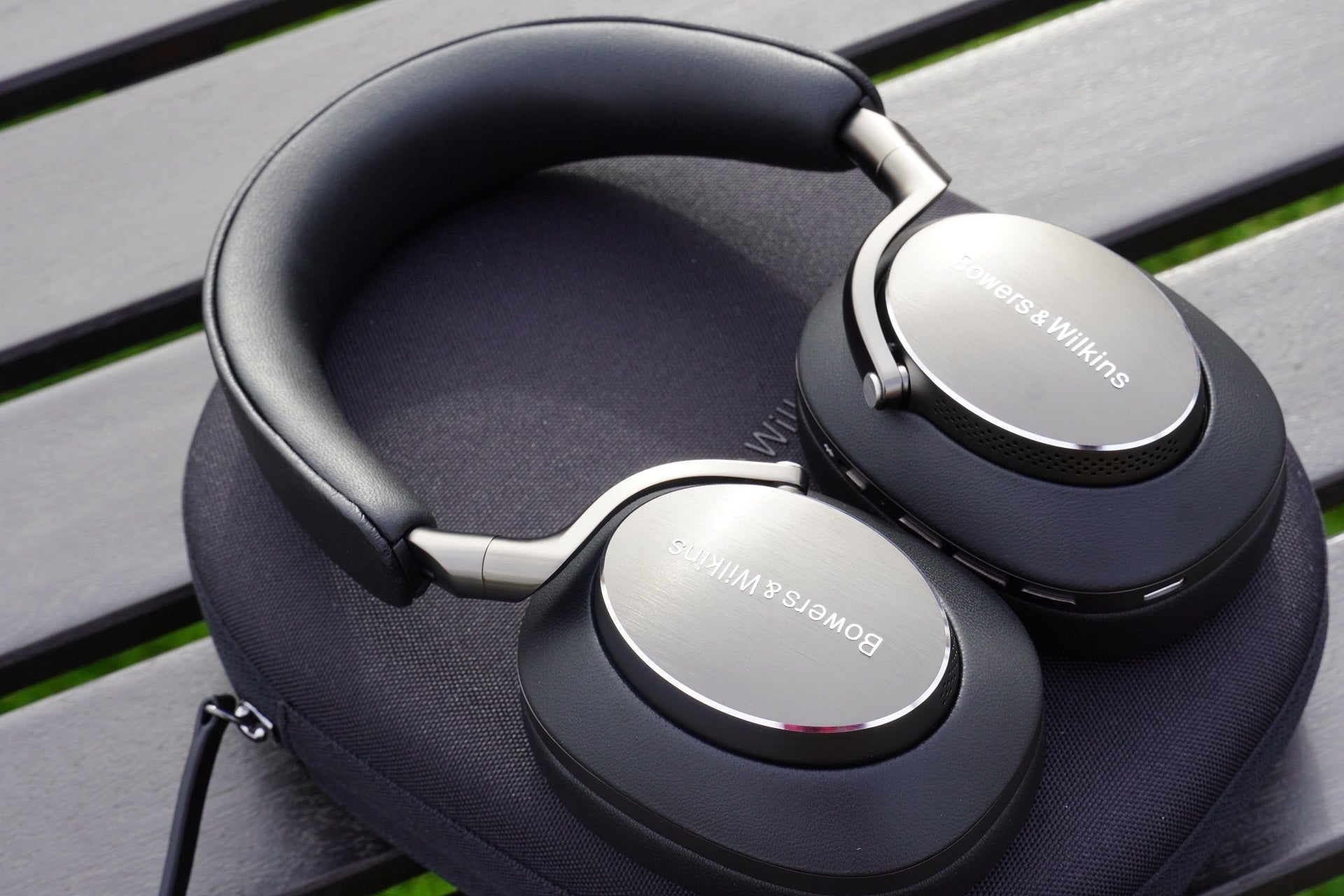
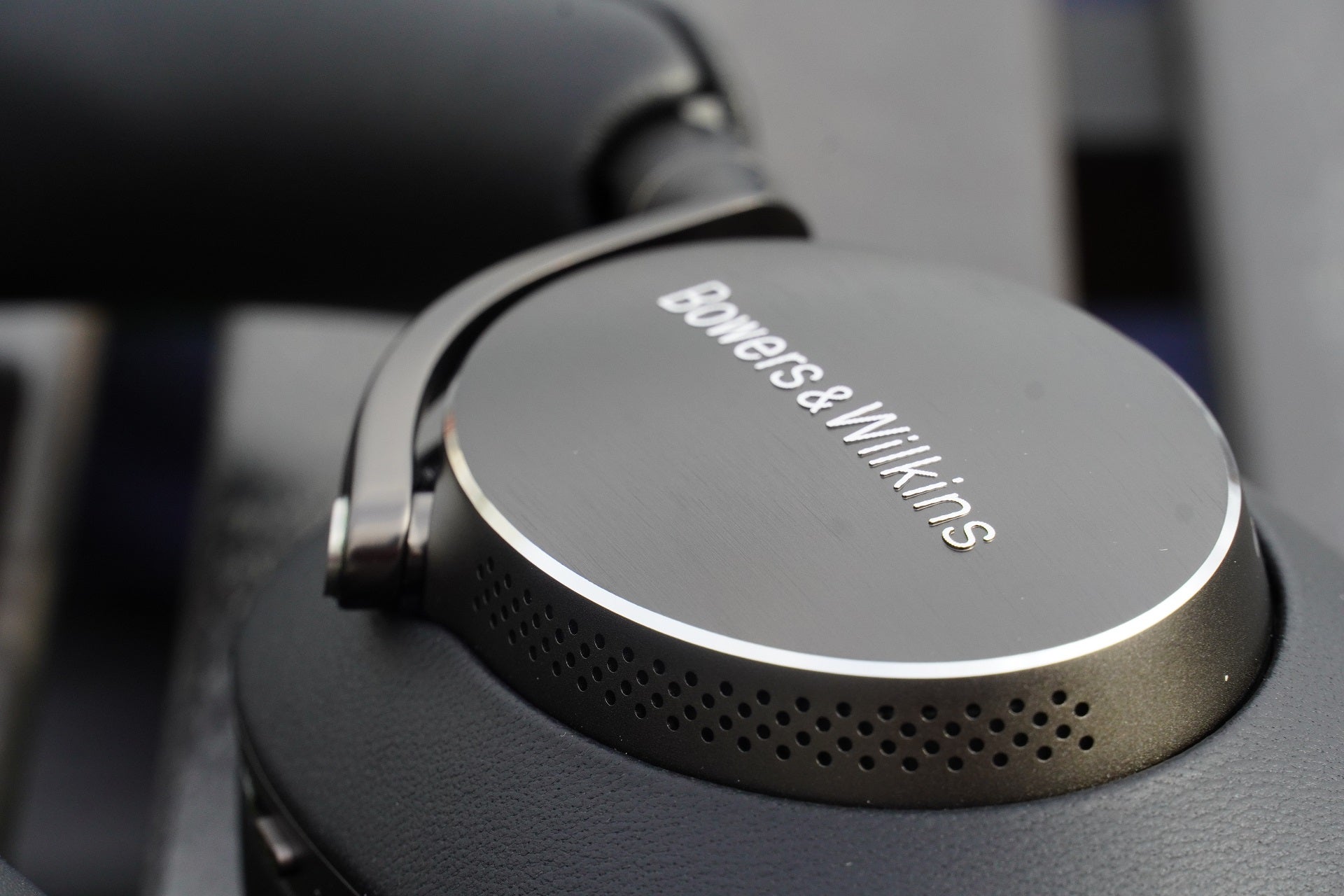
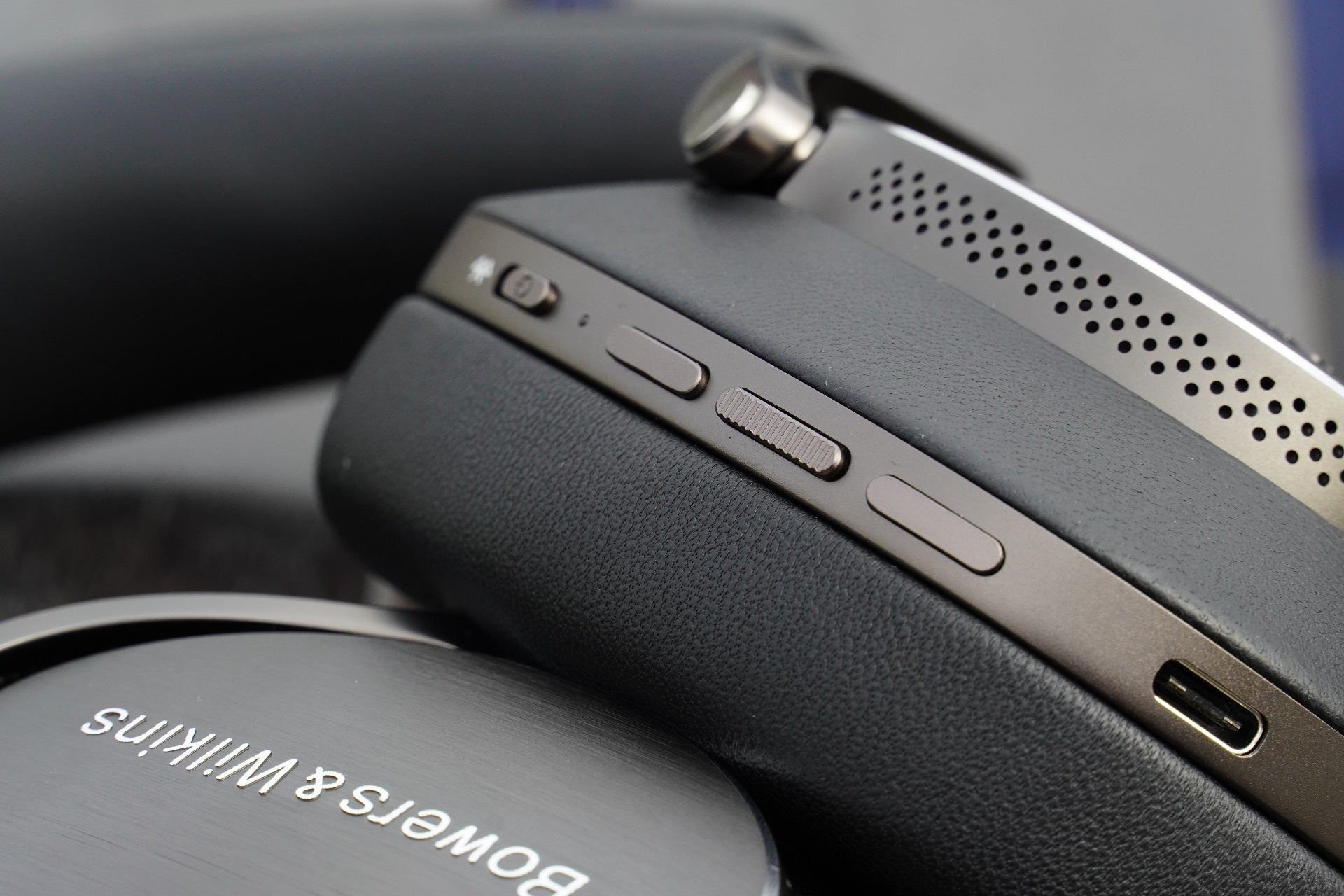

Verdict
The Bowers & Wilkins Px8 aren’t just an impressive sounding pair of headphones, but over-ears with effective noise cancellation, very good call quality and superb wireless performance. They’re one of the best premium wireless headphones you can buy.
Pros
- Improves on the PX7’s audio quality
- Confident noise cancellation
- Graceful looks
- Tremendous wireless performance
- Very good call quality
Cons
- Expensive
- More natural-sounding and dynamic headphones from Focal and DALI
Key Features
- B&W Music appFeatures access to services such as Tidal and Qobuz
- Carbon cone drivers40mm drivers placed at an angle to fire audio to the ear
- BluetoothSupports aptX Adaptive for consistent wireless connectivity
Introduction
The Px8 is Bowers & Wilkins’ flagship over-ear headphones that it believes sets the reference standard for performance and design for noise-cancelling headphones.
Those are heady words and a lofty claim for sure, but the Px8 impressed this reviewer back in 2022 when I first reviewed them.
Since then, they’ve received an update, with the acoustic team at Bowers & Wilkins optimising the sound for all Px8 models through a firmware update. With a new Royal Burgundy finish now available, what better time to have another look and B&W’s excellent over-ears?
Design
- Tight, grippy fit
- Great ergonomics
- Physical buttons for operation
The bulkiness of the original Px7 has been weeded out, and even though the Px8 is 10g heavier at 320g, it doesn’t feel as cumbersome to wear.
The earcups are oval in shape, which is said to present a more natural soundstage for audio; and the shape and finish of the cast-aluminium arms look splendid, and the Nappa leather texture of the earcups adds to the premium feel.
These headphones are available in Black, Tan, and Royal Burgundy versions, with the black colourway reminiscent of the styling on the Black Panther suit, while the newest burgundy finish reminds me of Iron Man’s suit. There are also special-edition versions, with Bond 007 (£699) and McLaren racing (£699) models – each pair looks fantastic, and very Bang & Olufsen in look.
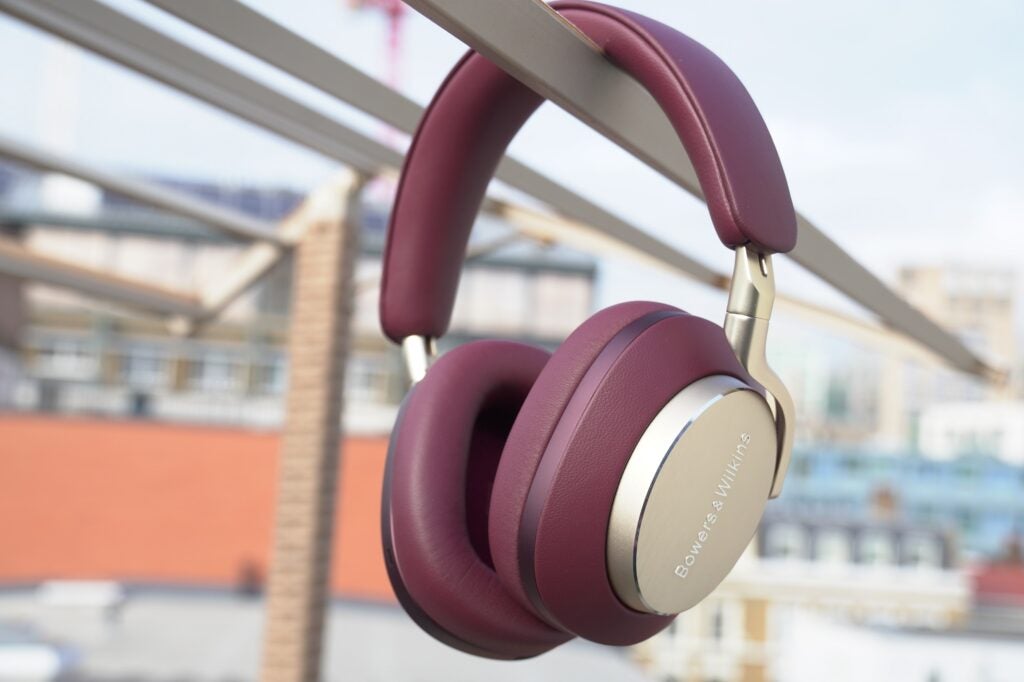
The Px8 aren’t identical to the Px7 S2 or the updated Px7 S2e, as the earcups are tilted at a different angle, with the headband slightly longer and wider in dimension. These changes make for a better fit, the headphones feel more secure and sit tighter on my head than the Px7 S2.
The Px8 set is comfortable enough to wear even if the padding on the earpads is not what I’d describe as plush like it is with the Master & Dynamic MW75. But the B&W headphones’ fit is tighter, and the cushioning is pliable enough against the head – the clamping force is tight but not bothersome. I’ve worn these headphones over many hours and never felt that the pressure was too much.
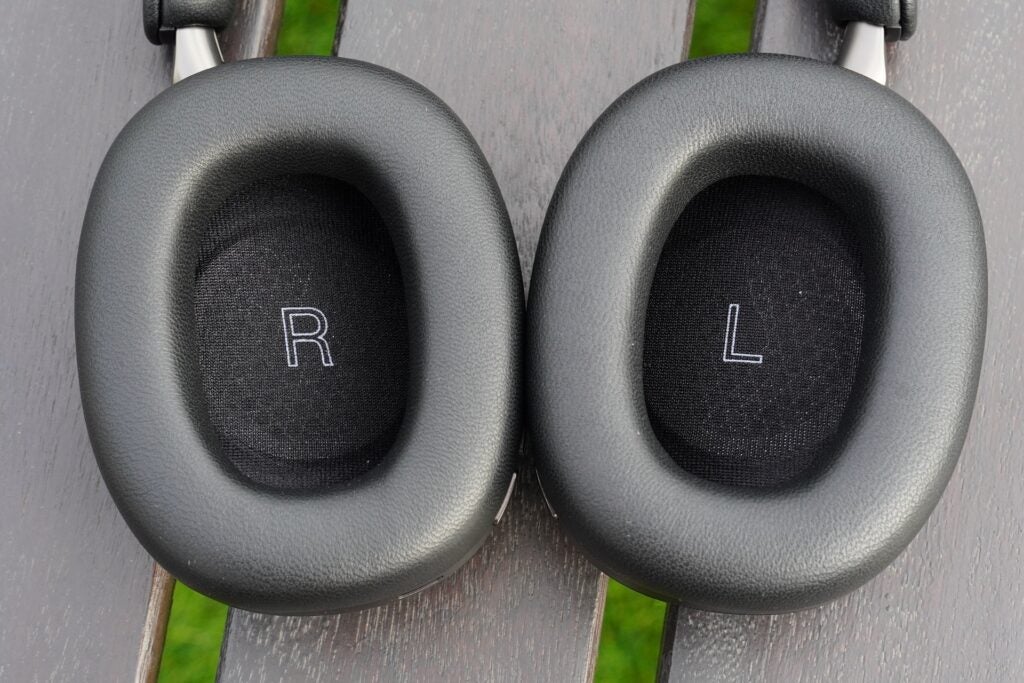
They can’t be collapsed inwards as a result of simplifying the design of arm linkages, which gives wind less chance to affect the noise-cancelling performance. That may be a regrettable loss for some in terms of portability.
B&W has again stuck with physical buttons, with a switch for power/Bluetooth pairing where a flick turns the headphones on, and a further push and hold sends the Px8 into its Bluetooth pairing mode.
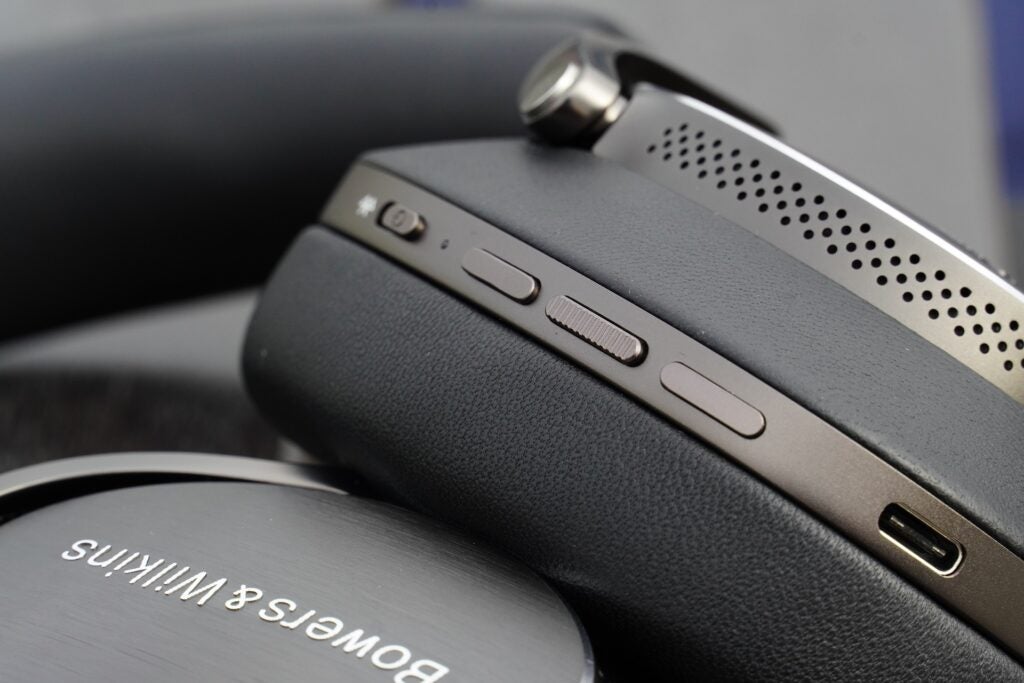
Either side of the multi-function button (which covers playback/track skipping) are volume buttons, though some complained with the Px7 S2 that it was hard to distinguish between them. I don’t agree, as the multi-function button has a different texture that makes it easier to locate.
On the left earcup, you’ll find a single button for switching between noise cancelling and transparency modes – operating the Px8 is a simple experience.
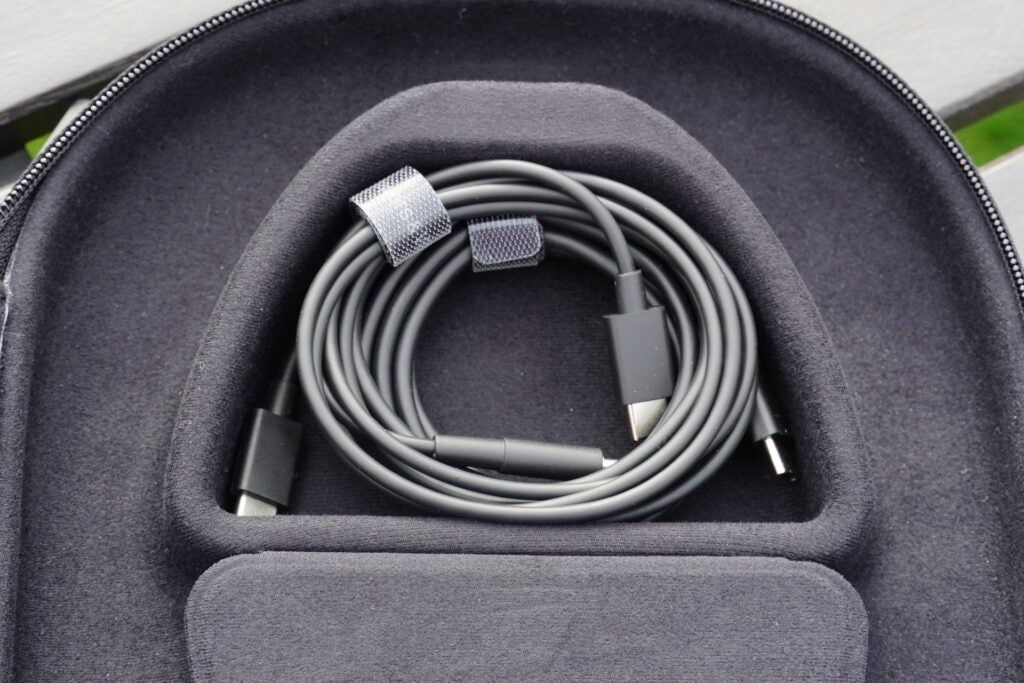
In terms of travel, there’s a hard carry case with a compartment for cables. The Px8 has a USB-C cable for charging and a USB-C to 3.5mm for wired playback. The only significant difference from the Px7 S2 is that the zipper tag is made from faux leather. I’ve taken the headphones on several trips across the UK and overseas, and the case has survived dogs and the contents of my rucksack with just a few scrapes.
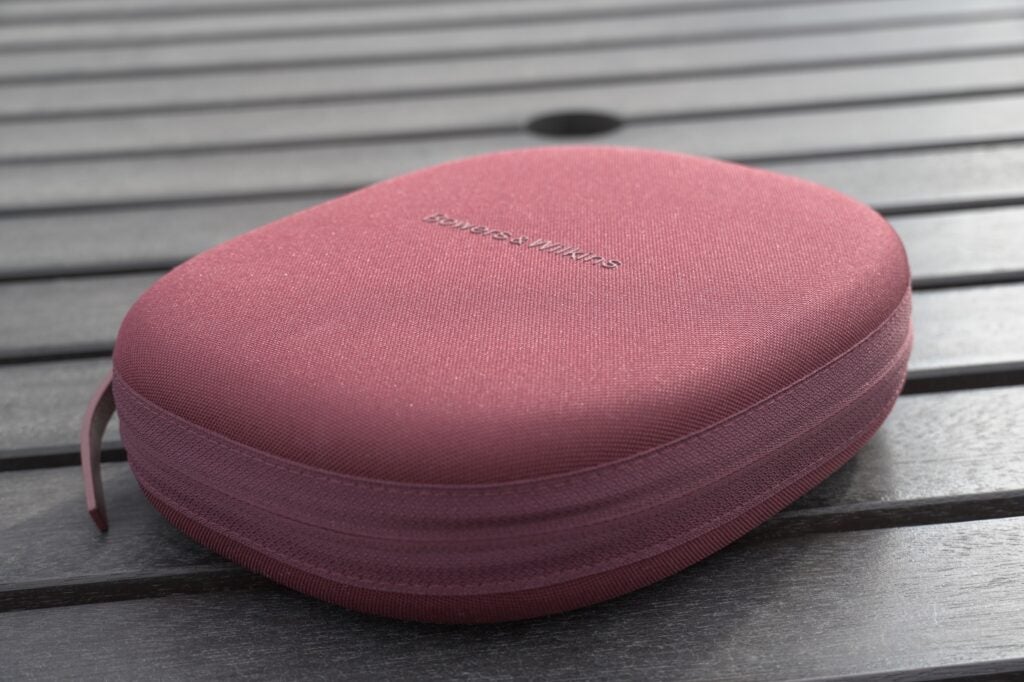
Features
- Confident noise cancellation
- Resilient wireless connection
- Very good call quality
In terms of battery life, there’s no advance on either the Px7 S2 or Px7 with its 30 hours. B&W has said it’s happy with the battery life and sees no need to extend it. Instead of extended battery life, the company focused on improving its fast-charging performance. A 15-minute charge is good enough for an excellent seven hours of playback.
As a means of comparison, the similarly priced M&D MW75 has a battery of 28 hours, while the AirPods Max has 20 hours and so does the Focal Bathys. Sennheiser and Technics have headphones that can go for longer (for less money), but the Px8 is competitive within its price bracket.
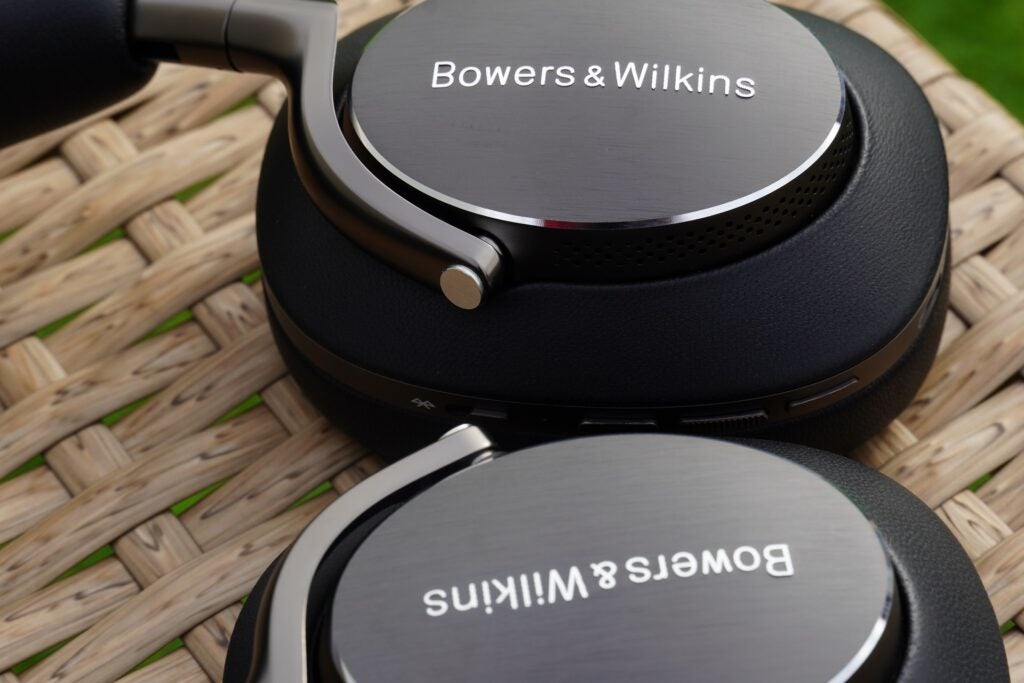
Bluetooth codec support is from standard SBC to aptX Adaptive – the Px8 arrived too early for aptX Lossless and the Snapdragon Sound platform. Connectivity with the aptX Adaptive codec is impressive: aside from a few momentary blips, nothing has thrown the headphones off whether it’s busy train stations or crowded areas in central London, they stick to their task admirably.
Moving to call quality, and it’s another area where this pair impresses. They’re not as good as the Sony WH-1000XM5, but are among the best I’ve used in recent memory, with my voice coming across clearly and background noises kept to a minimum.
The Bowers & Wilkins Music app has been updated to stream music directly from apps, so you can control playback within the app, instead of jumping between different apps. Those supported include Tidal, Qobuz, SoundCloud, Last.fm, TuneIn, Deezer and NTS.
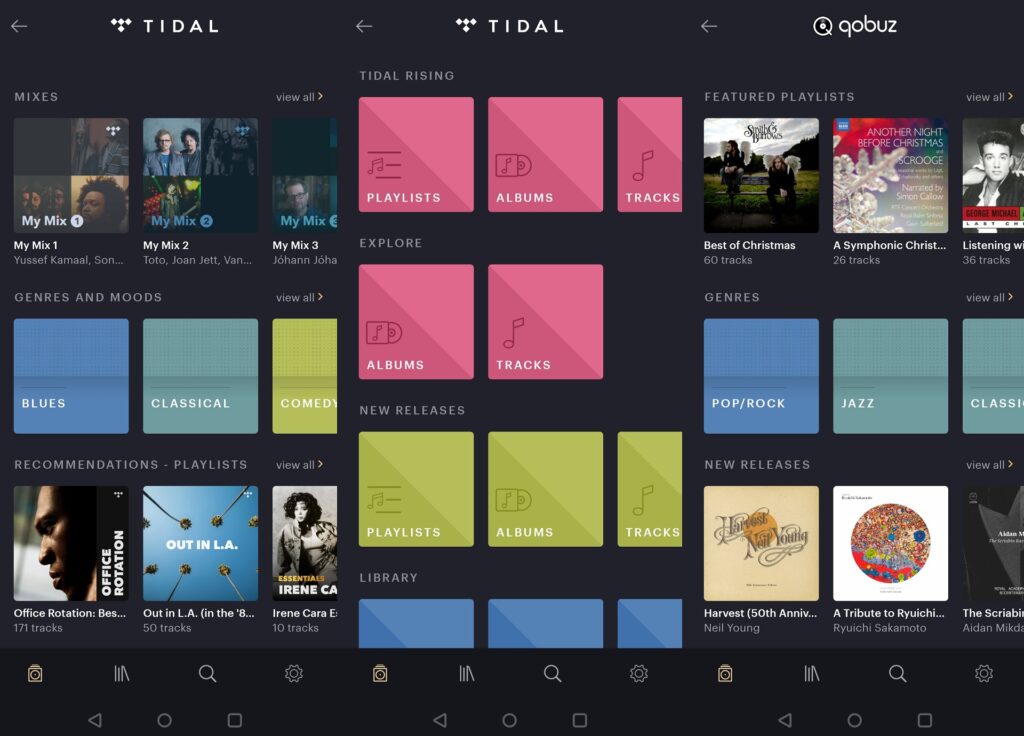
There are icons and graphics for the noise-cancelling mode the headphones are in at the top of the screen along with battery life. Jump to the section of the app that concerns devices (headphones or wireless speakers, such as the Zeppelin), and you can adjust the EQ (treble and bass from -6dB to 6dB), manage connections and customise the Quick Action button on the left earcup (Environment Control (i.e., noise cancellation) and Voice Assistant).
Further customisation is possible through changing the streaming quality of the integrated apps from Reduced Data to Highest, which can be modified for mobile and Wi-Fi connections.
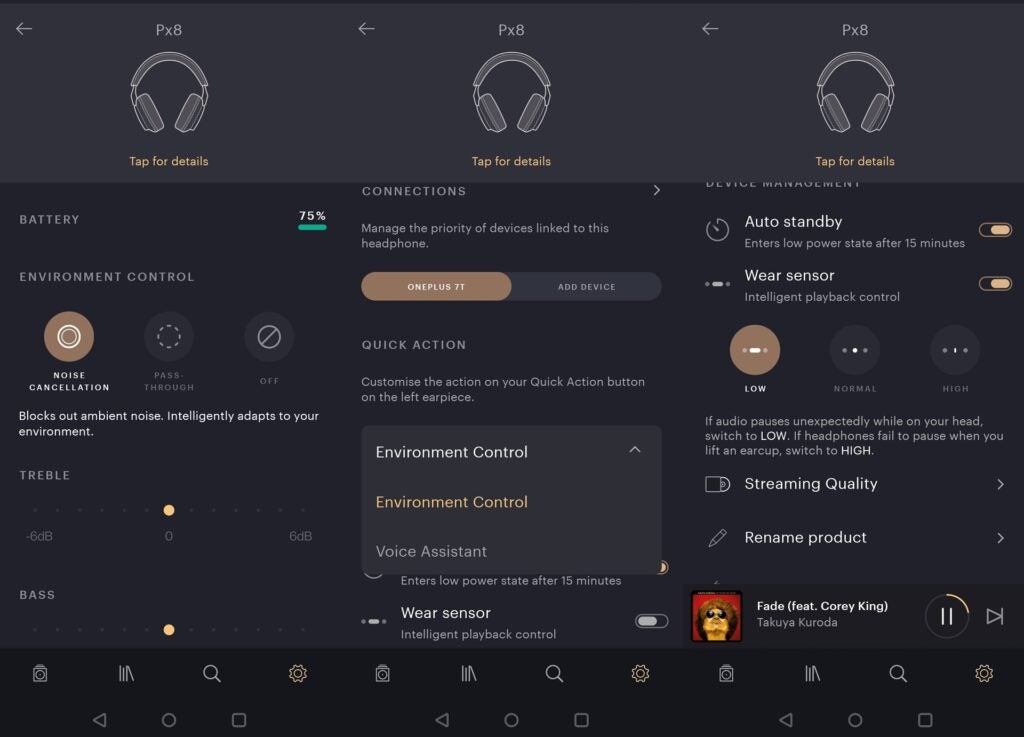
B&W has decided audio is its top priority over noise cancellation, making the ANC powerful enough to suppress external sounds, but not at the expense of audio quality. The headphones are an upgrade over the original Px7 S2 (we’ve yet to test the Px7 S2e) despite employing the same microphone arrangement (four for ANC and two dedicated to call quality). I imagine this is mostly down to the seal of the Px8’s earcups, which is far tighter than the S2 model, blocking out more noise with its passive isolating design.
With adaptive ANC on top of that, the amount of noise that makes its way through is reduced compared with the Px7 S2, and turning your head no longer allows sounds to leak through. The Px8 set is effective at suppressing noise in many environments such as the underground and more convincing than the MW75 was on Northern, Victoria, Jubilee and Central lines – hushing voices and managing wind noise to acceptable levels.
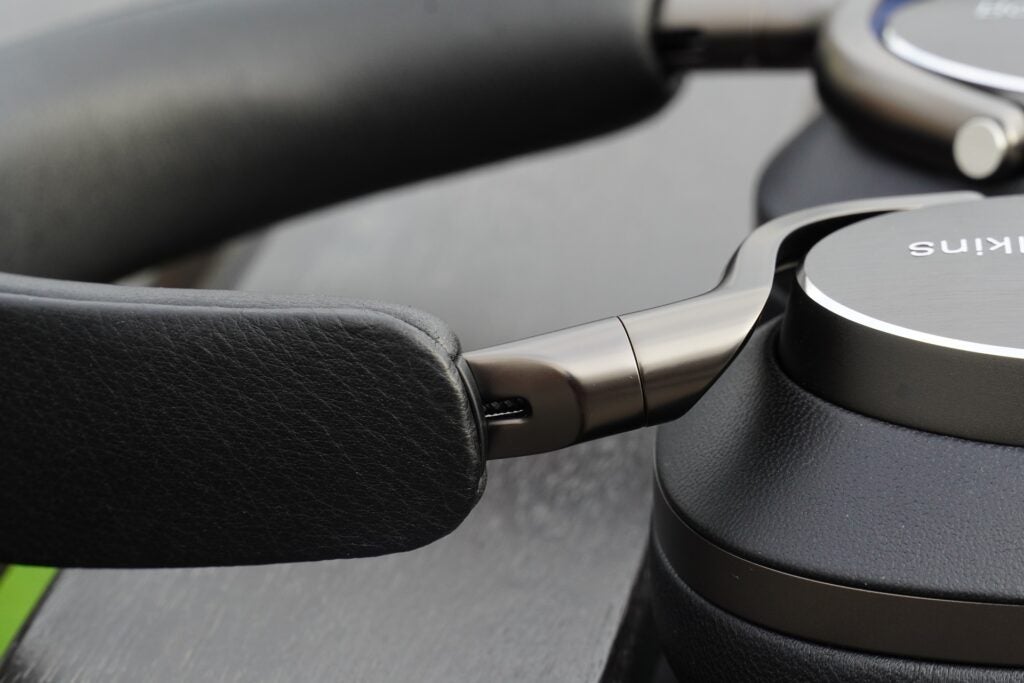
With throngs of people, the Px8 headphones condense the loudness of the crowd into a much more manageable sound – and it’s a similar effect with traffic. Using them on a long-haul flight, they suppressed the cabin and engine noise more precisely than the Focal Bathys managed. The performance is not the eerie silence some pairs from Bose and Sony, but it ushers in a sense of calm wherever you are.
The transparency mode is clear and natural in the manner it filters through sound – which is all you need from a transparency mode. Flick it on, and awareness of what’s around is effectively heightened. There’s a little noise, but not much that affects what you’re listening to or distracts.
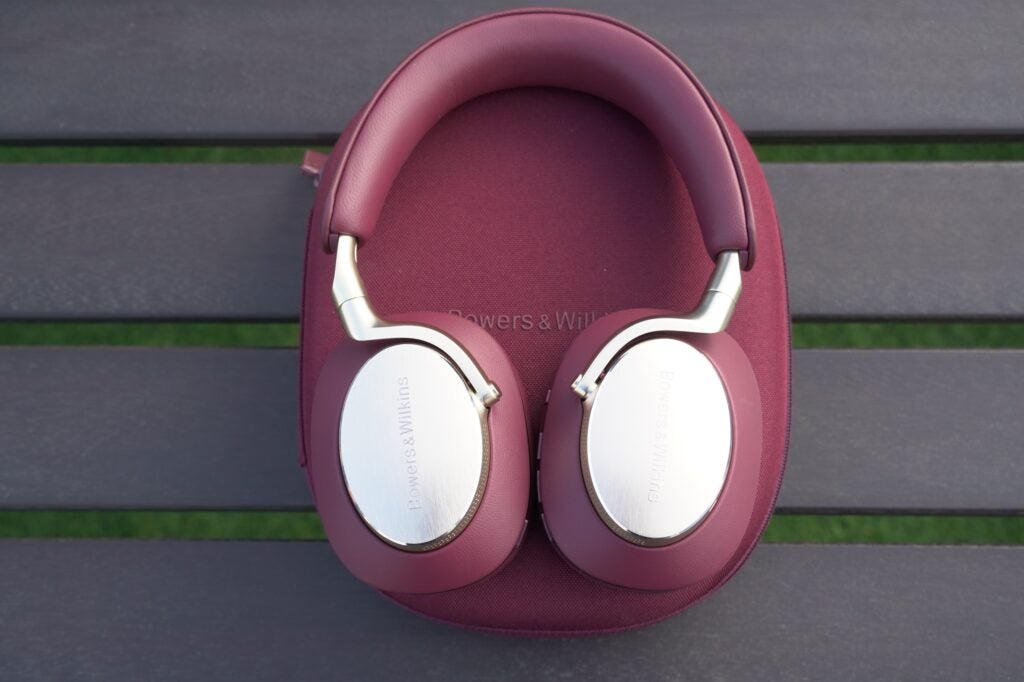
The only issue I have is that of the three modes provided: noise cancellation, passthrough and off, I don’t think you need the “off” setting. It caused confusion for me, as I forgot it was even there, often leaving the headphones in the off mode instead of switching to noise cancellation. This could be remedied by making it clearer whenever you change through noise-cancellation modes instead of hearing a bell-like sound each time.
The final thing to mention is the wear sensor technology. Previously with B&W headphones, there was a lag detecting whether the headphones were worn, and they wouldn’t immediately restart playback. That appears to have been ironed out, with the headphones stopping and restarting exactly as they should on the High setting.
Sound Quality
- Punchy bass
- Spacious soundstage
- Great sense of control
The headline specs are the 40mm dynamic full-range carbon cone drive units in each earcup that are angled to fire sound towards the ear for a more consistent time alignment and better stereo image. Alongside the new drive unit is a high-resolution 24-bit DSP (digital signal processor). You’ll need to subscribe to music services such as Tidal and Qobuz to take advantage of it.
What’s apparent is that the Px8’s soundstage is bigger, wider, and more expansive than the Px7 S2. With Tittle Tattle by Nubiyan Twist and Cherise, the soundstage is enlarged with a renewed sense of clarity and detail.
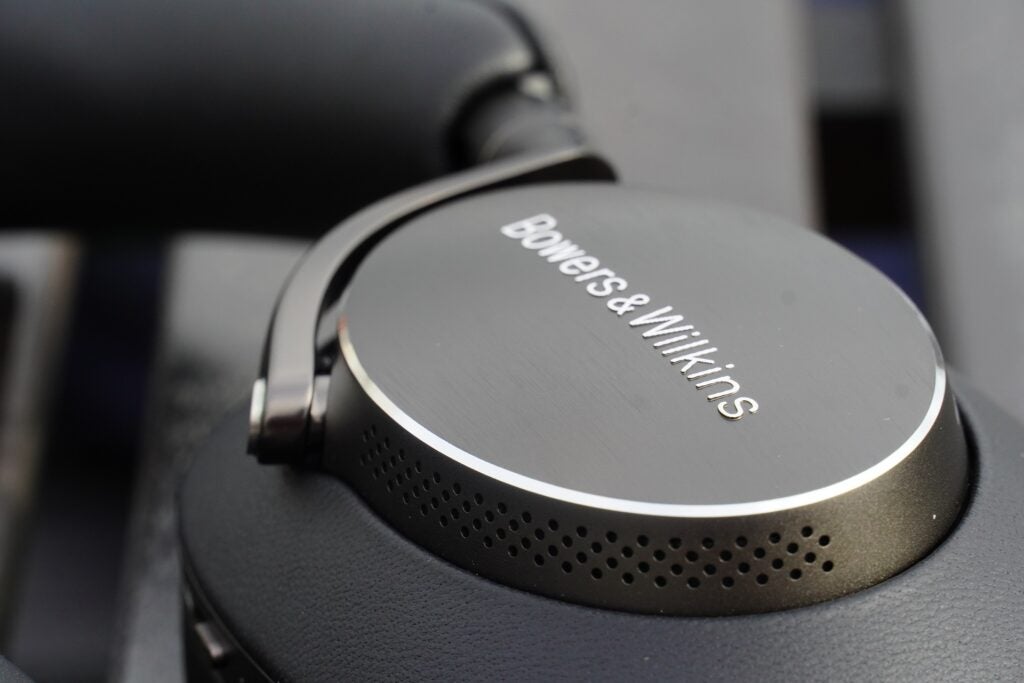
Low frequencies feature more definition and punch, the midrange is described with more openness, space, and sharpness. Cherise’s voice is pitched further forward, adding to the depth of the stereo image that’s more pronounced than on the Px7 S2. Those headphones offer a fine listen, but the Px8 ones are an audible progression forward.
B&W says it has improved the high-frequency performance over the Px7 S2 and the original Px7, and that stands up. With Immanuel Wilkins’ Grace and Mercy, the tinkling of the piano is brighter than both of those headphones. The original Px7’s treble performance is rolled off and dulled in comparison.
Compared with a pair of cans within the price range – the M&D’s MW75 – the performance difference is more even. With high frequencies, the M&D has the edge – it’s slightly brighter and more distinctive, and the trailing edges of the piano are just a smidge clearer and resolved.
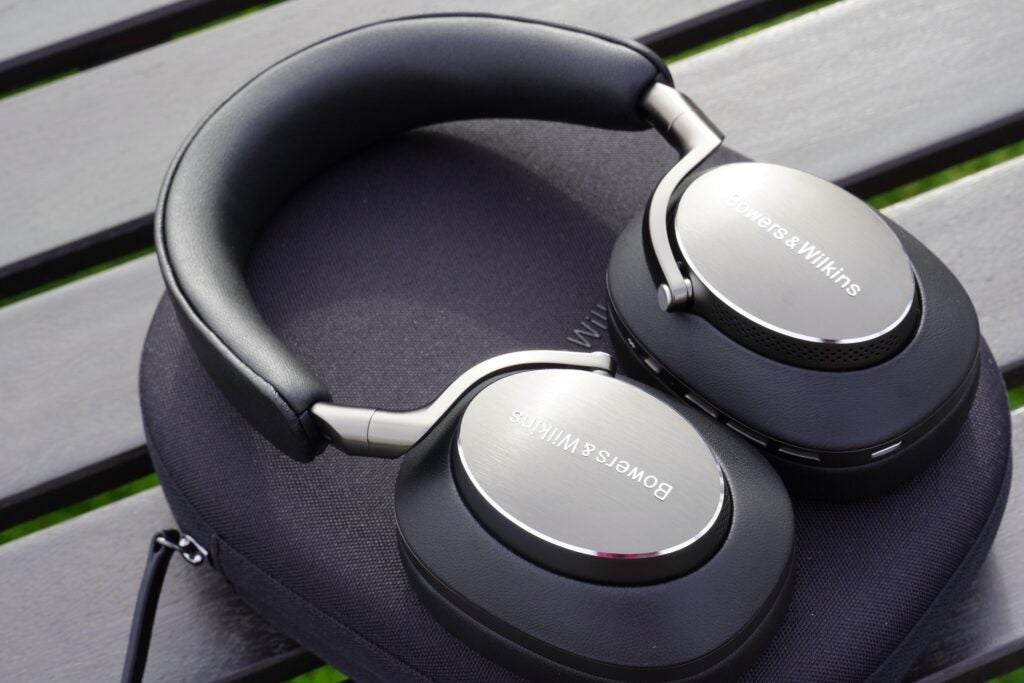
The MW75 produces a fair amount of signal noise, which is never prevalent with the Px8. The latter is a clean, precise, and dynamic pair of headphones – but so is the MW75, despite the noise. Bass in Easy Life’s Skeletons on both sets is delivered with punch and pace, but the Px8 ekes out more depth with the lower frequencies.
The Px8 – much like the Px7 S2 – exudes a harder, steely approach to audio. Perhaps it’s the carbon dome drivers, but I hear just some more heft and solidity to the performance. “Harder” isn’t a great word to describe this feeling – “impactful” is a better adjective. I wouldn’t describe it as the most natural presentation, especially with bass. The Focal Bathys offers a more insightful sound, as well as offering a more engagingly energetic character.
The midrange is fed with lots of detail: male and female vocals are firmly defined, planted in the middle of the soundstage, and enclosed within their own bracket of space that offers a tighter focus than headphones that are bigger but vaguer in their treatment of vocals. I prefer the specificity and definition headphones such as the Px8 (and indeed the Sony WH-1000XM5) can provide – even if they don’t sound as big.
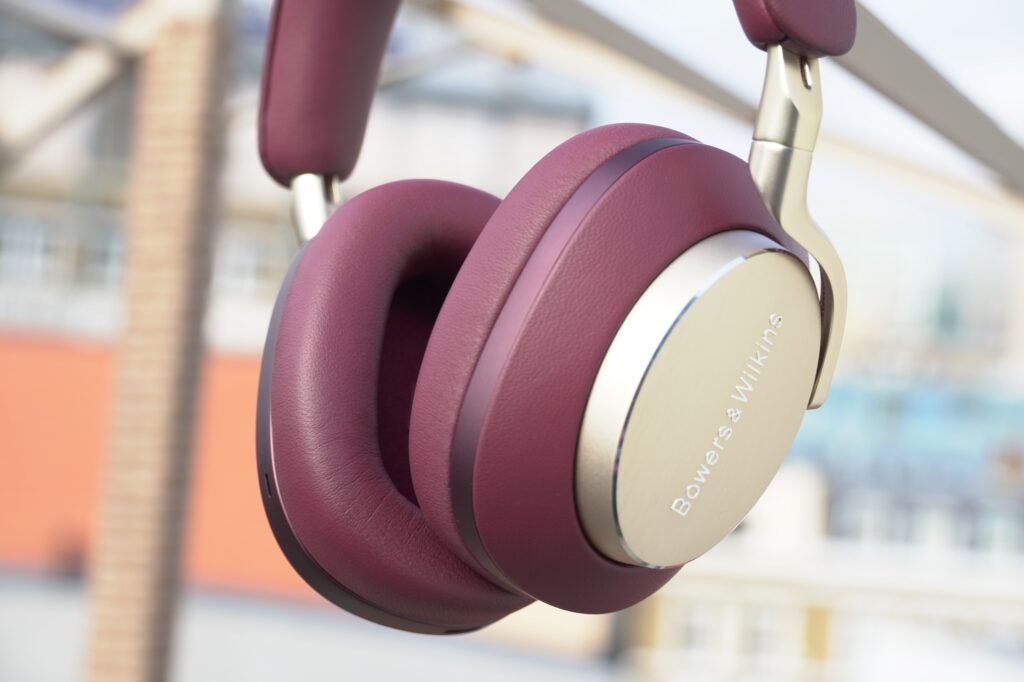
Tonally, they’re neither too crisp, which can lead to sibilance, nor too rich, which can result in lopsided balance. The frequency range comes across as a balanced, unified whole.
Rhythmically, they convince in communicating shifts in tempo (like with Tinie Tempah’s Simply Unstoppable (Yes Remix)), without losing their sense of definition or sliding towards favoring energy over detail. Whatever is played, the Px8’s reserves of control keep everything in line.
Latest deals
Should you buy it?
For their all-round performance
These headphones sound great, the noise cancelling is improved from the Px7 S2, and the wireless performance is nearly faultless.
There’s a better-sounding alternative for the price
If you’re willing to spend this much money you can arguable afford even, the Master & Dynamic MW75 are on a similar footing in terms of sound, while the Focal Bathys and DALI IO-12 are arguably even better.
Final Thoughts
The Bowers & Wilkins Px8 remain a great listen, and even more so with a capable music streaming service to feed them. I haven’t heard the upgraded B&W PX7 S2e so I can’t compare it against that model.
High-fidelity sound is at the core of these headphones’ identity, but they are also accomplished noise-cancellers. Call quality is up there with the best over-ears, and the wireless performance is simply fantastic.
Both the Master & Dynamic’s MW75 and the (more expensive) Focal Bathys and Dali IO-12 sound better in some areas, but B&W’s noise-cancelling performance is more consistent than those models. With the new Royal Burgundy finish, the Px8 continue to be a very good pair of premium wireless headphones.
How we test
We test every set of headphones we review thoroughly over an extended period of time. We use industry standard tests to compare features properly. We’ll always tell you what we find. We never, ever, accept money to review a product.
Find out more about how we test in our ethics policy.
Tested over several months
Tested with real world use
FAQs
The Px8 have a slightly different design for the headband and earcups, but the main difference is the drive units, the Px8 features 40mm Carbon Cone drivers compared to the Px7 S2e’s 40mm Beryllium drivers.

